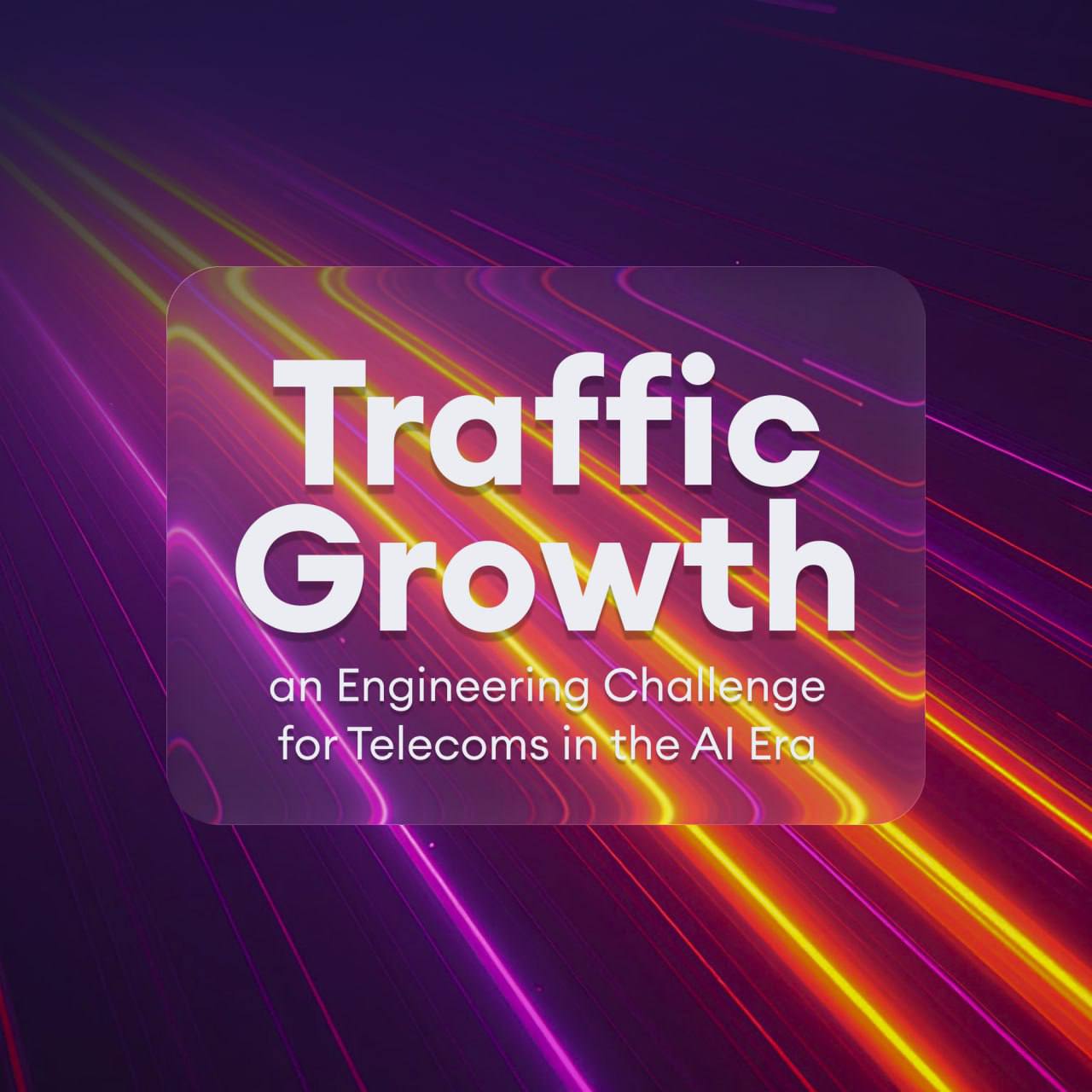We use cookies to improve our services. By continuing to navigate the site, you agree to the terms of use of cookies.
Filters
Map search

22 Oct 2025
Traffic Growth: an Engineering Challenge for Telecoms in the AI Era
According to the State of Disaggregation Report 2025, more than 80% of operators admit their current infrastructure is unprepared for the exponential traffic growth driven by AI/ML workloads and video streaming. Almost half remain unsure whether their networks can sustain the bandwidth demands of real-time AI. Forecasts only reinforce the concern. By 2027, global telecom traffic is expected to surpass 300 exabytes per month, while the AI segment is set to expand at a compound annual growth rate of 32.6% through 2034.
These figures point to more than simple growth. They mark a shift in traffic profiles, where ”hot spots” emerge within hours and traditional scaling models fail to adapt quickly enough.
Engineering Challenges: from uneven traffic to rigid legacy
Traffic growth is non-linear. At PoPs near major data centres, traffic loads can multiply almost overnight, while upgrade windows are narrowing to weeks. Legacy network stacks compound the problem: procurement cycles stretch into months, vendor lock-in slows the adoption of disaggregation, and the risk of overload rises.
The main challenges are well established:
🔸Uneven traffic profiles: AI/ML workloads create bursty flows that demand predictive monitoring to avoid latency spikes.
🔸Compressed scaling cycles: peaks arrive in hours, while upgrades are scheduled quarterly.
🔸Vendor lock-in: closed ecosystems reduce flexibility and inflate CAPEX.
As GSMA Intelligence notes, the combination of AI and 5G is intensifying these trends, making bandwidth optimisation a strategic priority for operators.
Architectural Responses: Flexibility over Monoliths
The industry is moving away from static models towards integrated architectures where transport, VLAN and IX function as a single system. This brings down both CAPEX and OPEX while giving engineers the ability to adapt in real time.
Typical solution stack:
🔸DWDM transport up to 400G: aggregating bandwidth rapidly without major rebuilds.
🔸Capacity VLAN: redistributing flows dynamically across PoPs.
🔸IX platforms with >10 Tbps capacity: acting as a buffer for bursts and balancing traffic across participants.
🔸Distributed PoPs across Europe: direct cross-links to data centres with sub-10 ms latency - a critical factor for edge AI.
At GNM, this stack is already operational: a 20,000 km DWDM backbone interconnects over 650 networks, GNM-IX provides >10 Tbps of available capacity, and distributed PoPs enable new participants to connect in days, not months.
Practical Insights: Forecasting and Automation
Network engineers are increasingly turning to analytics and ML models to predict traffic growth. At GNM, this translates into:
🔸Predictive planning: analysing AI/ML, CDN and OTT patterns to expand growth zones weeks ahead of peaks.
🔸Capacity VLAN + IX: seamless traffic migration with zero downtime, responding within hours rather than days.
🔸Regional equipment hubs: localised resources reduce the time-to-market for new connections to hours.
🔸AI-driven routing: real-time QoS optimisation based on actual load profiles.
Industry adaptation: from reactive to proactive
AI and video are reshaping the traffic equation: traffic dynamics are now more critical than absolute volumes. Legacy architectures are poorly suited to such dynamics. The path forward lies in modular stacks, disaggregation and real-time orchestration.
GNM’s experience shows that:
🔸Scaling must align transport, VLAN and IX;
🔸Resilience depends less on overbuilding capacity than on redistributing it quickly;
🔸Flexibility and forecasting are now as important as raw throughput.
Traffic growth is no longer a distant threat. It is a daily engineering challenge - and one the industry cannot afford to ignore.